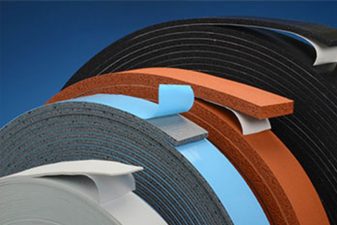Foams & Sponges
Silicone rubbers are substances whose chemical skeleton is made up of extremely stable silicon – oxygen linkages. Silicone rubbers are chemically related to quartz and glass and many of their excellent properties are similar to those of the latter materials. The molecular structure of silicone avoids the rigidity of the organic groups on every atom and during vulcanisation they are cross linked to form a three dimensional, flexible, rubber like substance. Inorganic fillers are embedded in the latticework structure and have a decisive effect on the general properties due to the reciprocal action between the filler and high siloxanes. As with other kinds of rubber, the physical and chemical properties of silicone may be varied by the appropriate selection of filler and catalyst.
Product Characteristics
After vulcanisation the general appearance of expanded silicone is a fine non-interconnecting cell structure encapsulated by a soft smooth outer skin. Density of structure is varied to suit the required application. Skin tear resistance varies with density. Due to the severe blowing action during vulcanisation there can be an element of curve along the length and cross sectional surface of the extrusion and is particularly evident on thin wide strip. Every effort is made to minimise this effect.

Chemical Resistance
Generally, silicone is resistant to moderate or oxidizing chemicals, but is attacked by many solvents, oils and concentrated acids when in direct contact.
Compression Recovery
We do not generally recommend a compression loading greater than 25% when used in working temperatures between 100°C to 200°C. Structure collapse will occur on loading above 25% and an increase in compression set is more evident on thinner sections.
Temperature Limitations
Samco expanded silicone offers designers a versatile product capable of withstanding temperatures from -60°C up to +200°C continuous use. Exposure at elevated temperatures will have a limiting effect on the life of this material.
General Properties
- Resistance to ultra-violet light, corona, arcing and ozone is good.
- Oxidation, which quickly destroys organic elastomers is virtually non existent with silicone rubber.
- With a low degree of moisture absorption the mechanical properties show little change, even after long periods of immersion. However, superheated water will cause the silicone to break down after continuous immersion.
- Silicone rubber is little affected by moisture in the form of free steam. However, with increased pressure, effects upon the structure of the rubber become greater. Expanded silicone is not recommended for long term service where steam pressure exceeds 50 psi.
- Expanded silicone possesses valuable non-stick properties.
